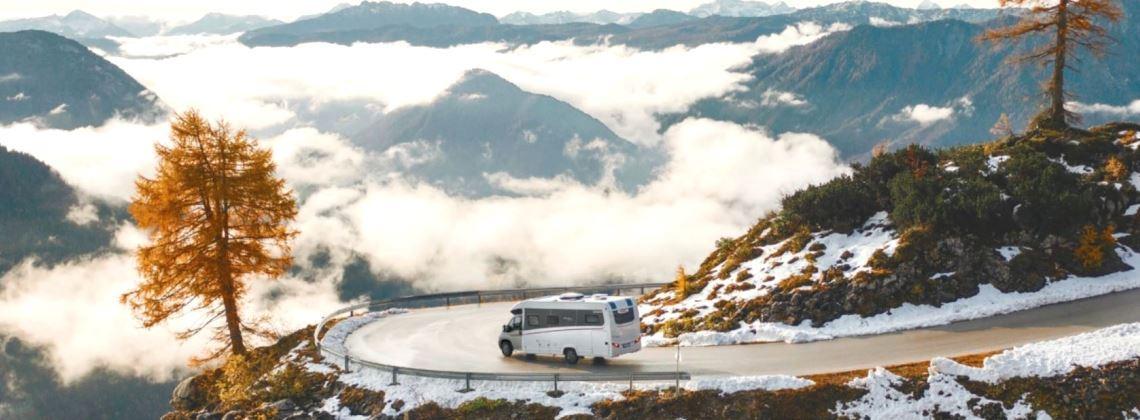
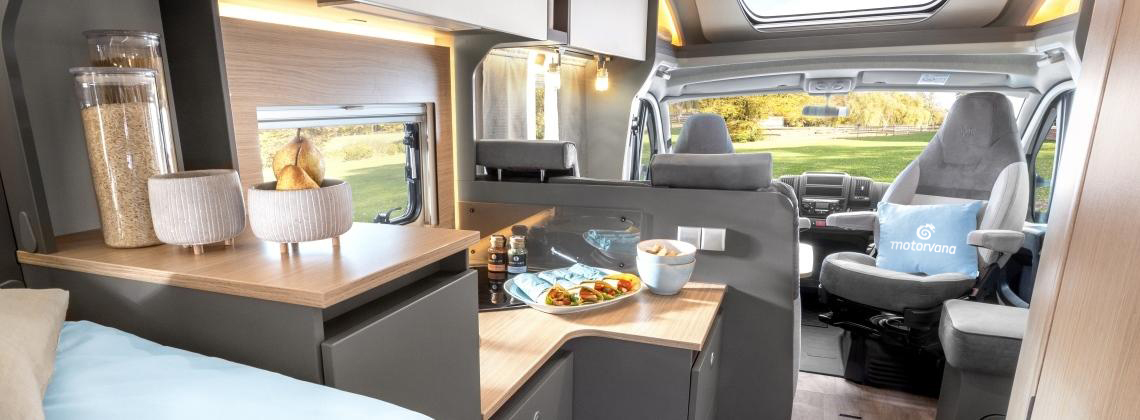
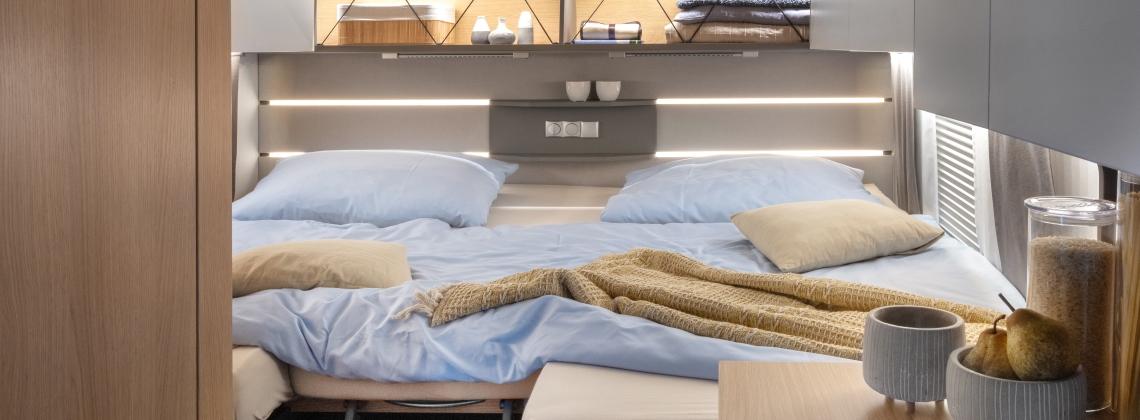
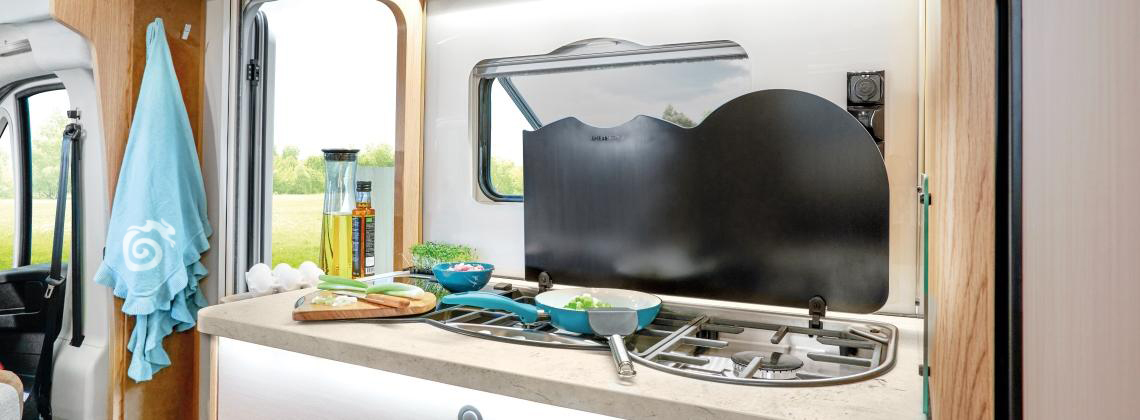
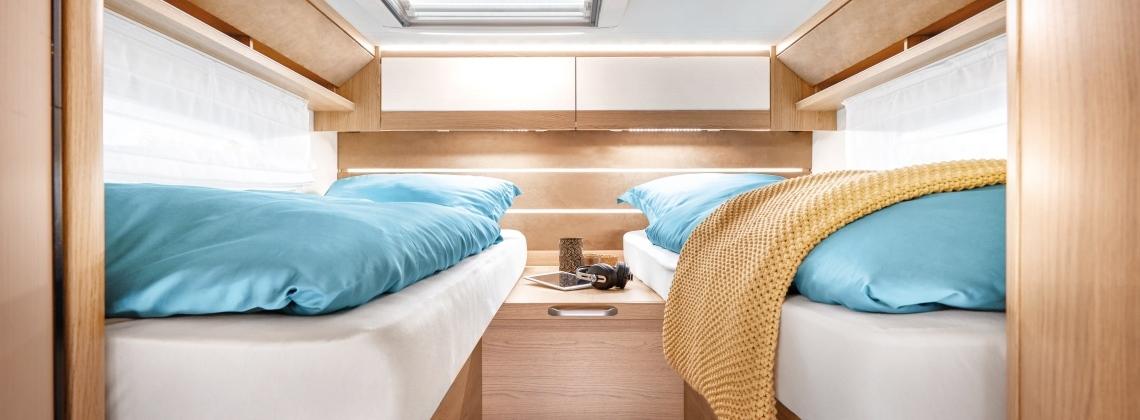
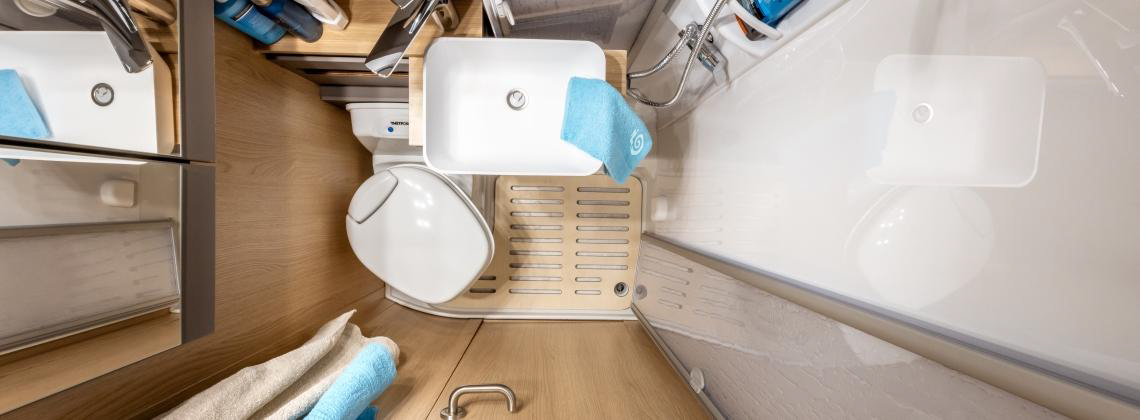
Please note the Our Europe RV Rental Customer Reviews average 4.7 out of 5, this based on a massive 751 European RV rental reviews!
MOTORVANA uses buying power to offer you big RV rental savings. Moreover we facilitate the whole Romania motorhome rental and camper van hire booking process, providing ultra-responsive customer support and a true total RV rental cost you can count on. We give you peace of mind.
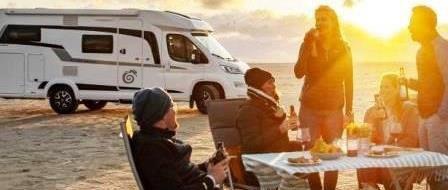
Romania RV Hire Specials: If you place your Romania RV rental booking request with Motorvana online, our software will present any relevant specials from the RV hire vendors.
Book early to secure availability. Many clients book their Ronmanian motorhome rental months in advance. Moreover, prices tend to be lower the earlier a RV hire booking is made.
Please note the Motorvana Europe RV Rental Customer Reviews average 4.7 out of 5, this based on a massive 751 European RV rental reviews!
Of all the countries in Europe, Romania is the cheapest to travel in. And with a motorhome or camper van rental it's even cheaper. More importantly, the value you will realize in a Romania RV hire is amazing. Over fifty RV campsites operate in Romania but they are relatively basic, often being in the gardens of residences or not much more than a parking lot. Free camping (alias wild camping, boondocking) with your motor home or campervan is legal in public places in Romania (both inland and on the Black Sea beaches) but is not allowed in the many National Parks and Nature Preserves. In the mountains you may encounter a sign advizing against such camping because brown bears are present; you might heed this advice or be ready and reconciled to high-tailing it out of there in your motorhome or campervan should a bear get aggressive toward you or your RV.
Romania is, in a word, primal — but in myriad ways.
Romania is bordered to the south by the Danube River and Bulgaria (the second cheapest country in Europe), to the east by the Black Sea and Moldova, to the north by Ukraine, and to the west by Hungary and Serbia. The Carpathian Mountains are the chief geological feature of Romania. An extension of Bulgaria's Balkan Range, which starts on the Black Sea, the Carpathians enter Romania by way of Serbia after suffering the eastward passage of the Danube River per the stunningly beautiful "Iron Gates" gorges. The mountains then strengthen into the mighty Carpathians that arc through Romania, Ukraine, Poland, Slovakia, and the Czech Republic nearly all the way to Vienna, Austria. Thus from Bulgaria's Cape Emine headland on the Black Sea a remarkably contiguous forested wild exists involving six countries — most notably Romania. This magnificent contiguity is Europe's greatest wilderness, a living museum of yesteryear, a true Land of the Lost. Most of Europe's large mammals still inhabit this expanse, including the aforementioned brown bear, the wolf, boar, lynx, chamois and deer. Your RV rental or camper van hire in Romania grants you total access to this tremendous, primitive outdoor museum.
The Romanian capital Bucharest lies in the south-central plains of the country, not far from the Danube. Although a bit rough around the edges, Bucharest offers excellent parks and museums, old Orthodox churches, Bell Epoque villas, a robust ethnic culinary culture, a thriving arts and crafts scene, Italian-style coffee shops and cafes, beer gardens, and lively nightlife. Don't miss the Romanian Athenaeum, magnificent home to the George Enescu Philharmonic Orchestra (named after Romania' greatest composer, Enescu). The stately building gives way to its ornate, marble-columned lobby and then to a breathtakingly adorned, delightfully rotund space for music, with some 650 seats encompassed by a wrap-around fresco of Romanian history.
About 124 kilometers north of Bucharest is Sinaia, a resort town in the Bucegi Mountains (part of the Carpathians). Up here your RV rental will really start paying dividends. Nicknamed "Pearl of the Carpathians", Sinaia was once the summer residence of the Romanian royal family. Sinaia now hosts trekkers and skiiers. Stroll through Dimitie Ghica Park and visit the elegant old Casino therein dating from 1912. George Enescu's summer residence is in Sinaia, too, along with a memorial museum. Northwest of the town, within the scenic Prahova Valley along the medieval route between Wallachia and Transylvania, is one of Europe's most beautiful if youngest castles: the neo-Renaissance Peles Castle, commissioned in 1875 by Romania's first king, Carol, and considered an architectural masterpiece. The castle features a lavish woodwork interior and boasts a great collection of art. The cable car nearby takes you to panoramic alpine views and fabulous trekking and skiing, along with restaurants, at 1400 and 2000 meters.
Also in Prahova County but just a few kilometers south of Brasov city is the Baiu Mountain ski resort Azuga, featuring two of the best ski hills in Romania: Sorica and Cazacu. The Baiu Mountains are also of course part of the Carpathians. Azuga itself boasts a dramatic view over the Bucegi mountains and their Bucegi Natural Park. The view is even better from the top of the gondola on Sorica mountain. Just up the road to Brasov is Predeal, one of the most popular mountain resorts in the Prahova Valley. Located at an altitude of 1033 meters (3389 feet), Predeal is the highest city in Romania. Ski slopes, restaurants, hotels, chic guesthouses and an altogether welcoming spirit are just some of the advantages of Predeal.
Arriving in Brasov you are now in, yes, Transylvania — which despite its notoriety is probably the most underrated area for RV travel in Europe. Brasov is the seventh largest city in Romania but nestles in a beautiful valley and has a picturesque old town with a central plaza the focus of which is the famous Black Church (Biserica Neagra), perhaps the largest Gothic style church in Southeastern Europe. Occupied since at least 9500 BCE, Brasov per invitations of Hungarian kings between 1141 and 1300 AD took in large numbers of settlers from Germany's Rhine and Mosel River areas. These "Transylvanian Saxons" were nudged there to develop Hungary-friendly cities, mines and farms. The Saxons took up residence in three distinct settlements within the city walls or northern suburbs of Brasov: Corona, around the Black Church; Martinsberg, west of Cetatuia Hill; and Bartholoma, on the eastern side of Sprenghi Hill. Of course Brasov retained a significant Romanian population, along with a Bulgarian population (both living in the Schei district), and also a Hungarian population (living in the Blumana district).
Just to the west is the small town of Rasnov, with its imposing fortress dominating a natural passage between Transylvania and Wallachia to the south. The fortress was built by Teutonic Knights between 1211 and 1225 AD. In 1856 the Roman fort Cumidava was discovered near the town.
A few kilometers westward is the imposing, 14th-century Bran Castle, with stunning views of the Bucegi Mountains to the south and the quite different Piatra Craiului Mountains (King's Rock) and National Park to the north. Bran Castle sits on a 60-meter tall rock outcropping. Bram Stoker never set foot in Transylvania but he tabbed Bran Castle as home of his Count Dracula, based on Vlad the Impaler, prince of Wallachia. In truth, Poenari Citadel, some two hours west on another important pass linking Transylvania and Wallachia, served Vlad as homebase. Bran Castle nevertheless is beautiful and wondrous, and within its sixty odd rooms and underground passageways it hosts terrific collections of furniture, art and armor collected by Queen Marie of Romania.
The Piatra Craiului Mountains are characterized by their singular, saw-tooth ridge running about 25 kilometers, its hightest point being 2238 meters (7343 feet). These mountains are considered one of the most beautiful parts of the Carpathians, perfect to explore by motorhome or campervan. The two-day ridge trail trek is challenging yet rewarding. From trailheads at Curmatura in the northeast or Plaiul Foii in the northwest, hikers climb to the ridge before following the rather precarious path atop. The southern end of the trail passes through a karst limestone landscape with deep gorges, scoured slopes, and caves. The traditional villages Magura, Pestera, Ciocanu, and Sirnea are great starting points from which to trek the eastern slope. Rock climbing is another popular activity in these mountains. The national park area possesses an incredible diveristy of plants, with about 300 fungi species, 220 lichen species, 100 different mosses, 1100 species of plants, 270 butterfly species, 110 bird species, plus large herbivores such as chamois along with large carnivores (brown bears, lynx, wolves). The 2003 film Cold Mountain starring Nicole Kidman and Jude Law was filmed here.
The aforementioned Poenari Citadel of Vlad the Impaler lies at the start of the incredible, 90-kilometer (56-mile) Transfagarasan road, named after the Fagaras Mountains it famously twists and turns through. The myriad hairpin turns negotiate the severe slopes toward the pass at 2042 meters (6699 feet). After experiencing this wonder in 2009, Top Gear's Jeremy Clarkson verbally crowned the Transfagarasan "best road in the world", an honor the presenters had long ago granted to Italy's famed Stelvio Pass. Originally called "Ceausescu's Folly", the road was commmisioned by Communist dictator Nicolae Ceausescu in 1970 as a military escape route in the event of Soviet attack. At least 38 workers died in the making. But don't worry, your light-weight, diesel motorhome will handle this beautiful dragon of a road like a mythological white stallion (which makes you St. George, then, doesn't it).
After negotiating the Transfagarasan pass northward in your RV hire you can continue to the Saxon-built Biertan fortified church which (together in this case with its village) is among the several fortified churches in Transyvlania protected as UNESCO World Heritage Sites. Carry on then to the small town of Sighisoara. Founded by the Saxon settlers on the site of a six-sided Roman fort (hence the name), Sighisoara's walled old town, punctuated by a medieval citadel, is now a UNESCO World Heritage Site, too. Sighisoara annually hosts a medieval festival where arts and crafts blend with rock music and stage plays.
Not far southwest is the marvelous former capital of Transylvania, Sibiu, originally a Dacian-Roman town but refounded by the Saxon settlers. Famed for its "houses with eyes", Sibiu was crowned 2007 European Capital of Culture. A year later it was ranked by Forbes number eight on a list of most idyllic places to live in Europe. What's more, the Sibiu region in general was given the 2019 "European Region of Gastronomy" award. Considered by experts one of the best tourist destinations in Europe, Sibiu is the only city in Romania to be awarded 3 Michelin stars. Sibiu is also known for its Christmas market.
If you do travel to Sibiu drive south 32 kilometers up the northeastern slope of the Cindrel Mountains to Paltinis, the oldest ski resort in Romania and one of the highest (1442 meters, 4730 feet). Founded by the Carpathian Transylvania Society in 1894 and today featuring eight slopes, Paltinis is still the most popular ski resort with locals and is a good choice for beginners and snowboarders. The resort also offers about 5 kilometers of cross-country ski trails, along with hiking trails, superb views, and a good selection of hotels, guesthouses and restaurants. Cindrel Nature Park lies just south and is accessible by hiking trails from Paltinis, but to drive there you will need to circle around westward. The Cindrel Mountains are one of the most important pastoral regions of the Romanian Carpathians. A dense system of old, ancient and perhaps prehistoric paths connect the seasonal homesteads of people who own the pastures and forests up to 1800 meters in altitude.
West of Sibiu and the Cindel Mountains is the picturesque 13th-century Deva Fortress, dramatically situated atop an extinct volcano in the Poiana Rusca Mountains. Southward is another of Romania's UNESCO World Heritage Sites, the ancient ruined city of Sarmizegetusa Regia, deep in Natural Park Gradistea Muncelului - Cioclovina, at 1200 meters (3960 ft) altitude. This was the center of the powerful Dacian Kingdom, whose people are the primary ancestors of the Romanian people. The Dacians were finally conquered by the Romans at the beginning of the 2nd century AD. Nowadays you can stroll among the remains of the terraced fortress and admire the impressive sun dial. One of the prime sanctuaries here is evocative of England's Stonehenge. Farther to the south, hiking enthusiasts can enjoy the trails in Retezat National Park, the oldest in Romania (established 1935). With pristine forests, rivers, valleys, gorges, alpine meadows, peaks, and glacial lakes, the area is a UNESCO Biosphere Reservation. A ring of Dacian fortresses in these Orastie Mountains — at Banita, Capalna, Costesti-Blidaru, Costesti–Cetatuie, Luncani-Piatra Rosie — protected Sarmizegetusa Regia, and the ruins of many can be visited today.
And now, perhaps by way of Domogled-Valea Cerneiyou National Park, you are approaching the mighty Danube, which flows 2860 kilometers (1788 miles) from its springs in Germany's Black Forest. Before reaching its delta on the Black Sea coast of Romania, the Danube flows through the magnificent "Iron Gates" gorges along the border with Serbia. The Iron Gates Natural Park is the second largest natural park in Romania and contains eighteen protected areas, the largest being the wet zone Ostrov–Moldova Veche. Trajan's Bridge, also called "Bridge of Apollodorus over the Danube", was located just east of here. A Roman segmental arch bridge, and the first bridge built over the lower Danube, Trajan's Bridge is considered one of the greatest achievements of Roman architecture. Functional for 165 years, this was the longest arch bridge for more than the next 1000 years. Only the entrance pillars are now visible, on either bank of the river, but below the water's surface several of the bridge's piers remain somewhat intact.
Across the Danube, in Serbia, is Derdap National Park. Trajan's Road, cut into the cliffs on this right bank of the Danube, served as the Roman Empire's military road along the Danube frontier from Singidunum via Viminacium through the Iron Gates to Trajan's Bridge. A Roman memorial plaque, the Tabula Traiana, 4 meters wide by 1.75 meters high, commemorating the completion of the road, is located on the Serbian side near Ogradina. In 1972, when the Iron Gate I Hydroelectric Power Station was constructed and the water was thus about to rise by a few dozen meters, the plaque was cut out en masse with the living rock and the small segment of Trajan's Road below and lifted to and installed in a notch that had been cut out above to receive it.
Also here in Serbia is Lepenski Vir ("Lepena Whirlpool"), an extremely important archaeological site of the Mesolithic Iron Gates culture of the Balkans, which thrived hereabouts from as early as 9500 BC to about 6000 BC and lasted until roughly 4500 BC. There's a border crossing via bridge nearby at Portile de Fier, just west of the Romanian town Dobreta-Turnu Severin, but make sure you have the right papers to cross. The Lepenski Vir site consists of a large settlement and some ten satellite villages. From 1965 to 1970, before the aforementioned dam (damn!) project raised the river level and totally flooded the site — which was largely if rather tragically relocated to higher ground — archaeologists discovered 136 prehistoric buildings here. The main village of Lepenski Vir was built on the slope toward the Danube, in the shape of a horseshoe, actually facing straight eastward at this bend in the river, toward the Romanian volcanic hill Treskavac rising opposite — and also toward the rising sun, especially at the summer solstice.
You can visit the relocated Lepenski Vir site, which is protected by a beautiful glass and white steel structure and includes a museum and a visitor center showing film footage of the original excavation. Nevertheless, architect Aleksandar Deroko called the relocation the "largest cultural massacre of the 20th century". The site was known for its outstanding degree of preservation and the exceptional quality of the artifacts, and no majority of it was preserved by the relocation. Much lies today under the muddy bottom of the bloated Danube. The villagers of Lepenski Vir took sandstone cobbles from the river and carved them into geometric or humanoid sculptures. These are the oldest stone sculptures ever found in Europe — and the world's first known representations of the human head using hard material. They are also the first sculptures with mouths and ears. The most famous figure is "Foremother" or "Progenitrix". She still bears traces of red pigment. Progenitrix seemingly had her equal in a male figure, this one dubbed by scholars "Danubius"
Numerous, sizeable fish-like sculptures have also been unearthed here, indicating the importance of fishing and likewise of river dieties and water deities in general; they have hair, brows, eyes, long noses and fish-like mouths. Archaeologist Dragoslav Srejovic, who first explored the site, says that these sculptures so early in human history, along with the original architectural solutions also discovered on site, mark Lepenski Vir as a striking, extremely early impulse in the development of the prehistoric culture of Europe. Architect Hristivoje Pavlovic has gone so far as to label Lepenski Vir "the first city in Europe". Functionally the houses here were little more than super-sturdy tents, sleeping places. Each featured a rectangular fireplace at center. At rear of the fireplace was a stone block decorated with sculptures of river gods — or still-born fetuses? — and, presumably, ancestors. It's as if the home, the ham, were a womb by which the ancestors were reborn through the sacred fire into the temporal world, re-becoming one with the living through cooked food and general warmth. Ah, yes, Mircea Eliade, the "eternal return". The floors of the houses are still hard as concrete; they were made of limestone mixed with ash and animal dung. Sometimes the dead were buried below this floor, a rather universal practice in prehistory.
Consider in this respect the word cemetery, which stems from the Proto Indo European (PIE) root kei, meaning "to lie, rest", with a secondary sense of "beloved, dear" and comparable to the Goth haims, meaning "village", to the contemporary English word home, and to the Old English ham, meaning "home, house, dwelling" — as in hamlet and, yes, Hamlet. Bear with us here. Remember, Romania is primal in many ways. And Eric here at Motorvana is crazy about this stuff. That same PIE root kei is the basis of our words city and citadel and seems closely related to the PIE root sed, "to sit", and to our set and settle. The Romanian word for citadel is cetatea, which corresponds to the Italian cittadella, the diminutive of the Old Italian cittade, "city". Here we see two important possible correlations: between Cetus/Set — the fetus, sea monster, river monster, snake, dragon, serpent in the Garden — and settlement; and between del/delta/triangle/diminishment and tea, as in Téa/Tara/terra/tertiary/tree, meaning, among other things, "three" (e.g. Triple Goddess) and "dark one", this latter as in the names of Ireland's Milesian Donn and of the corresponding mother goddess Dôn/Danu/Ana/Diana, meaning "dark one, dusky one, cycling one" — and as is the name Danube itself, from the PIE danu, "river". Romanian differs from other surrounding languages in giving this river a feminine name, Dunarea, a form not inherited from Latin. Interestingly, the word delta is from Phoenician daleth, "tent door" and represents a more or less universal symbol of the feminine. The houses of Lepenski Vir are conical, with a delta shaped door way.
Also noteworthy in these respects is the presence of varieties of the root dan in the name Odin/Oden/Woden/Wotan/Wutan and the name Poseidon. Here the root seems prefixed and poetically overlapped with varieties of the PIE root wed, "active water". The name Odysseus features essentially this same prefix. Another oxidized form of this root is the French word for water, eau. The Serbian word od means "walking" and is cognate with the Ancient Greek odos, "way, road, path". The mythological equivalence of Odin and Mercury is cemented etymologically with the equivalence of Od/Wed and mer, meaning "sea". These are water gods. So too is Merlin. They are gods of flow, of travel, of mediation, of connection, of boundaries, of the fundamental separation between (a multiplicity of) individuals, and likewise of the River Lethe. Wednesday is Woden's Day is Odin's Day is Mercury's Day. In Japanese, the word for Wednesday is Suiyobi, meaning "water day", and is associated with Suisei, the planet Mercury, literally "water star". The British sea-god is Nodens; his Irish counterpart Nuada is a member of the Tuatha Dé Danann, who later are recast as the fairies of British lore. Nodens corresponds in Arthurian legend to the Fisher King, also known as the Wounded King or Maimed King (as Odysseus was maimed by a boar), the last in a long bloodline charged with keeping the Holy Grail. Here we have Noah, Ea, Enki, whose sacred number is 40 and who is likewise associated with the Pegasus Square constellation and whose symbol is the fish or goat or fish-goat. And here we also have a version of Loki. In Norse mythology, Loki decides to catch the dwarf Andvari (the "Careful One") who lives under a waterfall and has the power to change himself into a pike (or salmon). Andvari, who is equivalent to Nodens/Nuada/Noah/Ea, possesses a magical ring, the "Andvarinaut", which has made him rich. Loki catches Andvari when he is in fish form and relieves him of his precious ring and gold. The Holy Grail is equivalent to that ring; it is a primal, circular path, the path of the Hero, of the eternal return.
Travelers know: The real treasure is the journey.
Andvari and Nodens are also equivalent to the Greek Hephaistos, whose name stems from the PIE root hep, meaning "body of water". That root survives in the Balto-Slavic languages Latvian and Lithuanian in the form upe, meaning "river", and in the Greek word epta, "seven", as in the seven planets visible in prehistory — the planasthai, "wanderers" (i.e. relative to the stars) — and as in September. Note also how close epta is to Petra/Peter. As explained on our Munich page, the Celtic god Beda is a water deity we can closely associate with Peter, as in Simon Peter, the fisherman.
A bit more about the Milesians and the Tuatha Dé Danann. The sons of Mil number eight (a number associated with the feminine). The eldest, Donn — meaning, again, "dusky one, dark one", as in the German Donner, "thunder", both names being derived from the PIE dhus — becomes king. The name Donn is related to the Welsh name of the mother goddess: Dôn, a variant of the continental Danu and equivalent to Ireland's Ana, goddess of the Tuatha Dé Danann. Dôn is married to Beli, as in beautiful and bellicose (war like) and Baal and Beelzebub. The sons of Mil defeat the Tuatha Dé Danann — "the tribes or folk of the goddess Danu", the so-called "gods" who aboriginally inhabited the island — but only by way of Donn climbing his ship's mast and absorbing the lethal defensive magic of these natives, thus sacrificing himself. Perhaps the Danube served as frontier not only for the Roman Empire but also for certain advanced Homo sapiens relative to aboriginal forebears, whether human or Neanderthal or both.
We really could go on all day. In short, go to Lepenski Vir if you can.
Northward in Romania are the Mehedinti Mountains, the lush Nerei-Beusnita Ravine National Park, and the cave-riddled Semenic-Caras Gorge National Park of the Banat Mountains — which in its Izvoarele Nerei reserve contains one of the largest areas of virgin beech forests in Europe. Pestera cu Oase ("The Cave with Bones") is a system of twelve karstic galleries and chambers in Nerei-Beusnita park, near the city Anina. In 2002 a speleological team exploring the the system discovered a previously unknown chamber housing a plethora of mammalian skeletal remains. The chamber seemed to have served primarily as a hibernation room for the Late Pleistocene cave bear, yet some of said remains seemed to have been specially placed on raised rocks, suggesting human usage as well. Indeed a complete human mandible, now dubbed Oase 1 (and also "John of Anina"), was soon discovered on the paleosurface. In 2015 scientists determined 6–9% of the Oase 1 fossil's genome is Neanderthal in origin. This is the highest percentage of Neanderthal genes found in an anatomically modern human and helps indicate the individual had a Neanderthal ancestor about four to six generations earlier. Similar fossils of other such individuals have been found in the cave since Oase I in 2002. Altogether these fossils are some of the oldest European early modern human remains, between 37,000 and 42,000 years old, and they may represent one of the earliest modern human populations to have entered Europe.
Continuing north you'll find the gentle Apuseni Mountains and Apuseni Natural Park. The area is famous for its numerous large caverns, lovely yet often spectacular landscapes, mountain pastures and meadows, very traditional working villages and culture, and the peacefulness and hospitality of the people. Here the tulnic is still crafted, a straight wind instrument 1.5–3 meters long, looking more like a didgeridoo than an alpenhorn but indeed used by shepherds to gather sheep or signal and communicate with each other. You can spend the night with the villagers here and enjoy their traditional cuisine. Consider imbibing their afinata, a delicious blueberry liqueur. The region's Bear Cave is a true masterpiece of nature, bristling with stalactites, stalagmites and other incredible rock formations. At an altitude of 1165 meters, the Scarisoara Cave opens to the outside via a huge chasm but harbors the second largest underground glacier in Europe, dating over 4000 years old.
In the far north is the more well known yet equally if not even more antique region Maramures, some half of which is actually in Ukraine. By "antique" we mean quite medieval in the best sense of the word. "Fairy tale" might be more apt. The Romans never set foot here. And primarily because the region is isolated like no other in Europe, a way of life quit by virtually all European societies largely persists here. The isolation is complemented by the beauty of the pastures, valleys, mountains and forests (beech, flowering ash, poplar, spruce) — the latter still covering some 80% of the region. Wood is king in Maramures, wood-working the queen (or vice versa). The traditional houses are crafted of timber, with dovetail joints and wooden pegs, no nails. The steep, shingled roofs fend off the snows. Each house has its own well. Seriously. Enormous wooden gates feature commonly, most embellished with fine carvings of ropes, wolves' teeth, and suns and bearing a shingled roof as if the gate in its own right is a home or, perhaps better, a temple, an alter, a sacred quantum of passage. Janus himself would be, or is, quite satisfied. Attending the house are crisp rows of vegetables. Hanging in an adjacent tree are a kaleidoscopic hash of pots and pans, an artful way to store utensils, obviating the need for cupboards — and perhaps also at once a pseudo-banishment of the profanity which is metal and likewise serving as an homage to the god of the woods and wood, the Green Man, Tree Man, Three Man, Triple God, Triple Goddess, Donn, Danu, Tara, Téa, Dea, Deus, Zeus–Poseidon–Hades, Father–Son–Holy Ghost. … The fields are punctuated by handmade stacks of handmade hay, originally, yes, cut by scythe. You may visit during the threshing season; or the felt-pummeling season; or the distilling season, when grains, potatoes, beets, honey and such are manually distilled by wood fire and infused with plums, apricots or other fruits to create horinca brandy. Tiny fruitwood ladders, made from the wood of the corresponding fruit tree or bush, are hand crafted and impossibly placed in the bottles which will receive the brandy, lending to the liquour a golden color and a further dimension of flavor and meaning. Regardless, you will go to a peasant market and perhaps there participate in the trade of grains if not of chickens and pigs. You will go to a service in one of the one hundred beautiful old wooden churches — eight of which are UNESCO World Heritage sites — to witness locals in their Sunday best, the women in traditional, colorfully embroidered blouses, skirts and felt aprons. (Felt, which is made by matting, condensing and pressing fibers together, is not only useful but also signifcant: wool felt is considered the oldest of all textiles.) The Orthodox service is about two hours long, but even it you pop in for just a few minutes the congregation will be pleased with your interest in their traditions.
The tallest wooden church in the world is in the Peri Monastery of Maramures, Romania, right at the border with Ukraine. Here too is the famed Merry Cemetery. This small sea of some 800 carved, particolored grave markers bearing comical poems about the life and death of the person interred stems from local artist Stan Loan Patras who created the first marker here in 1935. This cemetery is yet another representation of eternal return, of antique and even archaic, prehistorical culture founded on a belief that death is not final but rather a mere passage within a fractal cyclicity of existence. Not far eastward you will find the Barsana Monstery, also on the UNESCO list. The people of the region started building such churches in the 1600s, and continued into the 1800s, as a consequence of the Catholic Austro-Hungarian prohibition of stone Orthodox churches.
Of the several narrow gauge railroads now operating again in Romania the most well known is in the beautiful Vaser Valley of Maramures. Built in 1933–1935, this Maramures railroad system was chiefly meant to facilitate logging and is still used for it today despite otherwise being rehabilitated as a tourist attraction. The main line is 43 kilometers long. Several steam engines ply the system's tracks but so do diesels and — get this! — converted campervans used by border police, rangers and others who need to quickly ascend into the mountains. The train occasionally does go off the rails — literally — but at its 10 km/hour the event is not dangerous and the local passengers will get the train back on the rails in no time at all (to the eternal benefit of the cocktail-party-storyteller within you). In addition to their regular services, these trains can be charted by tourists, and special services are run on New Year's Eve and other holidays.
Astride the eastern border of Marumures is Romania's Rodnei National Park, featuring the longest continuous mountain ridge (50 kilometers) in the country and benefitting from UNESCO Biosphere status. Diversity of flora and fauna and likewise of geography characterize the park. Activities include horseback riding, trekking and mountain biking. Keep your eyes out and up for golden eagles, peregrine falcons, pigeon hawks, sparrow hawks, and buzzards.
Speaking of birds, you can now say your goodbyes to the Carpathian mountains and enjoy the easy drive through agricultural Romanian Moldavia down to the Black Sea and the bird watcher's paradise which is the Danube Delta. Just before reaching the sea, the Danube forms the second largest and best preserved of Europe's deltas: 5700 square kilometers of protected rivers, canals, marshes, tree-fringed lakes and reed islands. The maze of waterways bordered by thatch, willows and oaks entangled in lianas offers the perfect breeding ground for countless species of birds, some of them from as far away as China, Africa or the North Pole. The Danube Delta is moreover a paradise for wildlife enthusiasts in general. Here is not only the highest concentration of bird colonies in Europe — consisting of some 300 species of birds, including cormorants, pelicans, kingfishers, white tailed eagles and glossy ibises — but likewise a rich variety of fish and of animals such as deer, wildcats, foxes, wolves, and wild boar. Altogether, 3450 animal species can be seen here, as well as 1700 plant species. No wonder the Delta is yet another UNESCO World Heritage Site.
Nearly 20 seaside resorts await you just south on the Black Sea. The beaches are great and it's amazingly inexpensive to spend a few days or many more enjoying this Romanian version of the Riviera. Mamaia, just north of Constanta city, is the most popular Romanian resort town on the Black Sea. World famous DJs mix all night along the beaches here. Camping S Mamaia's green lawns and trees provide a quiet motorhome campground within minutes of the north end of the beach.
If you happen to be traveling Romania during winter, consider synching up with "The Cuckoos". One of the oldest and most colorful Romanian customs, The Cuckoos precedes the start of Lent and involves beautifully adorned masks and costumes. This is basically Mardi Gras, Carnival, a celebration of the passage into the antique New Year. Neighboring Bulgaria more famously calls it Kukeri. In Romania The Cuckoo ususallly wears a mask shaped like a globe, embellished with hundreds of paper flowers and ribbons. The rest of the participants are men dressed as women. Each carrying a stick, the men are burdened with large heavy bells hanging around their waists. They roam the village and touch or gently strike audience members to pass on to them protection against monsters, diseases and other misfortunes in the coming year. The village of Branesti, very near Bucharest, is well known for this festival, but The Cuckoos also occurs elsewhere in Romania, such as in Constanta, Calarasi (southeast of Bucharest, near the Danube), and, interestingly, in the Maramures region.
Apart from our discounting, the prices and policies presented on the Motorvana website match the prices and policies of our suppliers. You aren't paying extra by going through Motorvana — in fact you're paying less.
Motorvana facilitates the whole RV rental booking process, presenting a single total cost you can count on — and acting for you as an accessible resource and, if necessary, as a mediator.
Motorvana: Free Your Travel
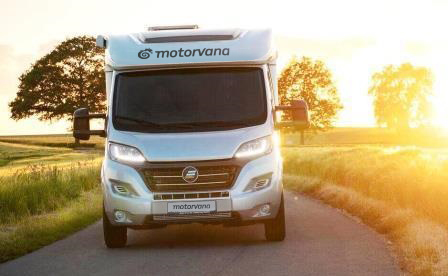
Many variables determine the cost of a motorhome rental or campervan hire in Romania, including RV size, seasonality, and optional extras.
For exact total costs, submit a SEARCH above. Our online order software will present all the RVs, whether motorhome, campervan or truck camper, ordered by price.
All the details about the RV, price, inclusions, rental depot location, and rental policies will be presented during our online order process.
Various optional items are available for hire with a RV rental, and these greatly affect the total cost. These items (e.g. camping table and chairs, bedding, shuttle transfer) are presented during our online order process, along with selectable pick-up and return times.
In many cases the RV rental company offers free miles / free kilometers and/or an inclusive package that bundles together a set of optional extras for one relatively low price. Our software will present such packages as well.
Similarly, RV rental companies often offer specials that involve optional extras. Such specials can be complicated and hard for customers to understand. Our software will carefully present such packages too.
We think our software is unique in terms helping our customers optimize their RV rental and minimize their costs in these important respects. Our aim is to provide you with the best value.
Barabara Falk & Ladd BurmasterWe recently rented a camper from Motorvana and toured from Lyon to the Alps region where we did some spring skiing for 3 weeks then headed to the French Riviera for 10 days... we loved this mode of travel and found campsites easily in most places we went. My husband did all the driving and he was most impressed by the European drivers as opposed to the drivers in the USA. He found the camper fairly easy to operate even touring the mountains with the tight hairpin turns. Read More …
Stefan & Nicole PriceWe wanted to thank Motorvana and Avis Car away for the most incredible experience traveling through France, Switzerland and Germany. The Class B+ motor home provided was exceptional (we wish comparable vehicles were available in North America). The service and support from Motorvana made the planning and reservation process effortless. Responses to our many questions were incredibly prompt and thorough. Read More …
Bob FogelsonThis is a totally unsolicited note of pure praise for Motorvana from a retired local judge who admires competence and doesn't suffer fools graciously. If someone can please this cynical old coot, they probably can please anyone. My wife and I, in our 70's, recently returned from a ten week RV trip through Europe. Our RV rental was arranged through Motorvana, and picked up in Germany. Prior to this experience we had no prior dealings with or knowledge of Motorvana. Read More …